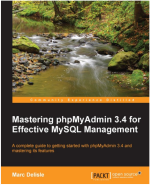
So, its up-to you which web server to choose for installation.īut do remember that, you must have working LAMP ( Linux, Apache, PHP and MySQL/MariaDB) or LEMP ( Linux, Nginx, PHP and MySQL/MariaDB) setup installed on your working system.

Here we’ve provided installation of PhpMyAdmin for both the web server’s Apache or Nginx.
#PHPMYADMIN FOR PHP 5.2 HOW TO#
In this article we’re going to show you how to install latest stable version of PhpMyAdmin for Apache or Nginx on RHEL, CentOS and Fedora distributions. It was written in PHP language, through this application you can do various MySQL administration tasks such as create, drop, alter, delete, import, export, search, query, repair, optimize and run other database management command via browser.Īs other well-known web-based interfaces for managing system services, blog creation tools, or content management systems (CMSs), it is often targeted by malicious attackers who seek to exploit the usual lack of security measures. Suggested Read: 20 MySQL (Mysqladmin) Commands for Database Administration in Linux PhpMyAdmin is a web-based interface for managing MySQL / MariaDB databases that is used as a replacement for command-line utilities. To make MySQL administration much easier we’re introducing a web based MySQL administration tool called PhpMyAdmin, with the help of this tool you can control and manage your database administration via a web browser easily.

Suggested Read: MySQL Basic Database Administration Commands

MySQL administration via command-line in Linux is very difficult job for any newbie system administrator or database administrator, because it contains numerous commands which we cannot remember in our daily life.


 0 kommentar(er)
0 kommentar(er)
